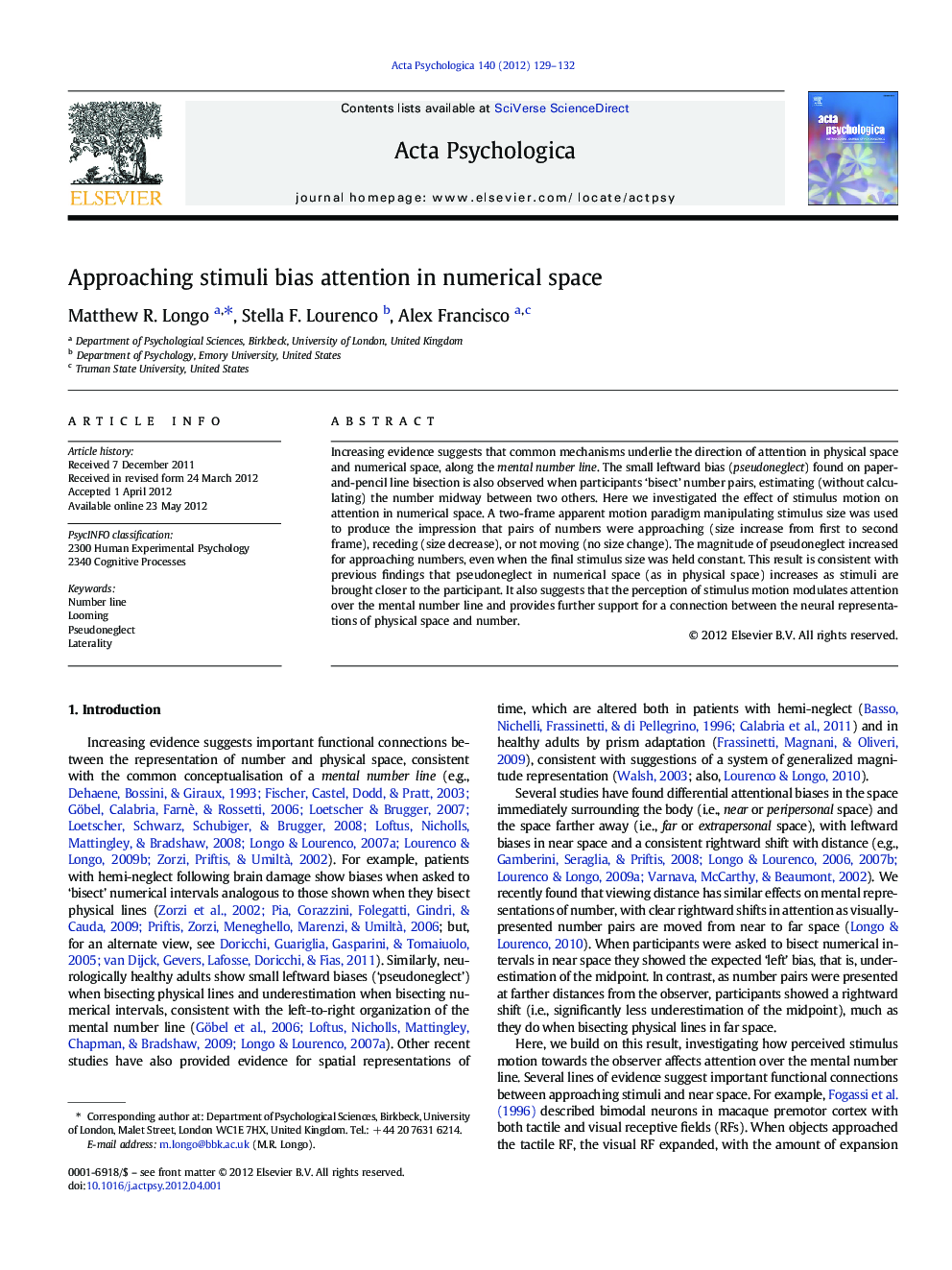| Article ID | Journal | Published Year | Pages | File Type |
|---|---|---|---|---|
| 920008 | Acta Psychologica | 2012 | 4 Pages |
Increasing evidence suggests that common mechanisms underlie the direction of attention in physical space and numerical space, along the mental number line. The small leftward bias (pseudoneglect) found on paper-and-pencil line bisection is also observed when participants ‘bisect’ number pairs, estimating (without calculating) the number midway between two others. Here we investigated the effect of stimulus motion on attention in numerical space. A two-frame apparent motion paradigm manipulating stimulus size was used to produce the impression that pairs of numbers were approaching (size increase from first to second frame), receding (size decrease), or not moving (no size change). The magnitude of pseudoneglect increased for approaching numbers, even when the final stimulus size was held constant. This result is consistent with previous findings that pseudoneglect in numerical space (as in physical space) increases as stimuli are brought closer to the participant. It also suggests that the perception of stimulus motion modulates attention over the mental number line and provides further support for a connection between the neural representations of physical space and number.
►People show a small leftward bias (pseudoneglect) when bisecting number pairs. ►We examined effects of stimulus approach on attention in numerical space. ►Approaching number pairs were bisected farther to the left. ►Provides further evidence for links between representations of space and number.
